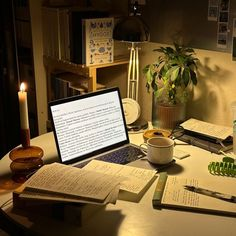The Science Behind Spa Therapies: How Treatments Like Aromatherapy and Cryotherapy Work
The growing popularity of spa therapies is rooted in their ability to promote relaxation, healing, and overall well-being. Among the diverse treatments available, aromatherapy and cryotherapy stand out for their unique approaches to enhancing physical and mental health. Understanding the science behind these therapies can help individuals make informed choices about their wellness routines.
## Aromatherapy: Harnessing the Power of Scent
**What Is Aromatherapy?**
Aromatherapy utilizes essential oils derived from plants to promote physical and emotional well-being. These oils can be inhaled or applied topically during massages or other treatments. The fundamental principle behind aromatherapy is that scents can influence mood, emotions, and even physiological responses.
**How Does It Work?**
1. **Olfactory System Activation**: When essential oils are inhaled, they stimulate the olfactory receptors in the nose, which send signals to the brain's limbic system—the area responsible for emotions and memories. This connection can evoke feelings of calmness or invigoration depending on the oil used.
2. **Physiological Effects**: Certain essential oils have been shown to have therapeutic properties. For instance, lavender is known for its calming effects, while peppermint can invigorate and enhance focus. These oils may help reduce anxiety, improve sleep quality, and alleviate symptoms of stress by influencing hormone levels such as cortisol and serotonin[3][4].
3. **Application Methods**: Aromatherapy can be experienced through diffusers, topical applications (often mixed with carrier oils), or during spa treatments like massages. The method of application can enhance the therapeutic benefits, with massages combining the effects of touch and scent.
## Cryotherapy: The Science of Cold Therapy
**What Is Cryotherapy?**
Cryotherapy involves exposing the body to extremely cold temperatures for therapeutic purposes. This treatment can take various forms, including whole-body cryotherapy chambers or localized applications such as ice packs or cold compresses.
**How Does It Work?**
1. **Cold Exposure Mechanism**: When the body is exposed to cold temperatures, blood vessels constrict (vasoconstriction), which reduces blood flow to the treated area. This process helps decrease inflammation and swelling while numbing pain receptors[5].
2. **Post-Treatment Rebound Effect**: After the cold exposure ends, blood vessels dilate (vasodilation), leading to increased blood flow back to the area. This rebound effect promotes healing by delivering oxygen and nutrients while flushing out toxins.
3. **Pain Relief and Recovery**: Cryotherapy is often used by athletes for muscle recovery after intense workouts or injuries. Studies suggest that it can reduce muscle soreness and improve recovery times by minimizing inflammation and promoting faster healing[4][5].
## Benefits of Spa Therapies
Both aromatherapy and cryotherapy offer numerous benefits that contribute to overall wellness:
- **Stress Reduction**: Aromatherapy helps alleviate stress through scent-based relaxation techniques, while cryotherapy provides physical relief from pain and soreness.
- **Improved Sleep Quality**: The calming effects of certain essential oils can enhance sleep patterns, while reduced muscle tension from cryotherapy may facilitate better rest.
- **Enhanced Mood**: Aromatherapy has been linked to improved mood through hormonal balance; cryotherapy may also elevate endorphin levels post-treatment.
- **Pain Management**: Both therapies can play a role in managing pain—aromatherapy through relaxation and cryotherapy through inflammation reduction.
## Conclusion
Understanding the science behind spa therapies like aromatherapy and cryotherapy reveals their potential benefits for both physical health and emotional well-being. By incorporating these treatments into wellness routines, individuals can experience enhanced relaxation, improved mood, and effective pain management. As more people seek holistic approaches to health, spa therapies continue to gain recognition as valuable tools for achieving balance in life.
Citations:
[1] https://www.skinmds.com/blog/the-three-most-common-spa-treatments-and-what-they-do-for-your-skin/
[2] https://serapool.com/en/newsletter/what-is-spa-pools
[3] https://www.urbancompany.com/blog/spa-health-benefits
[4] https://www.webmd.com/beauty/features/spas-the-risks-and-benefits
[5] https://www.jaypeehotels.com/blog/benefits-of-spa-treatments
[6] https://www.bellacollina.com/blog/a-beginners-understanding-of-spa-treatments
[7] https://mountainsidespa.com/10-benefits-of-spa-treatments/
[8] https://pureaestheticsgainesville.com/10-benefits-relaxing-spa-day-visit/


Comments
Post a Comment